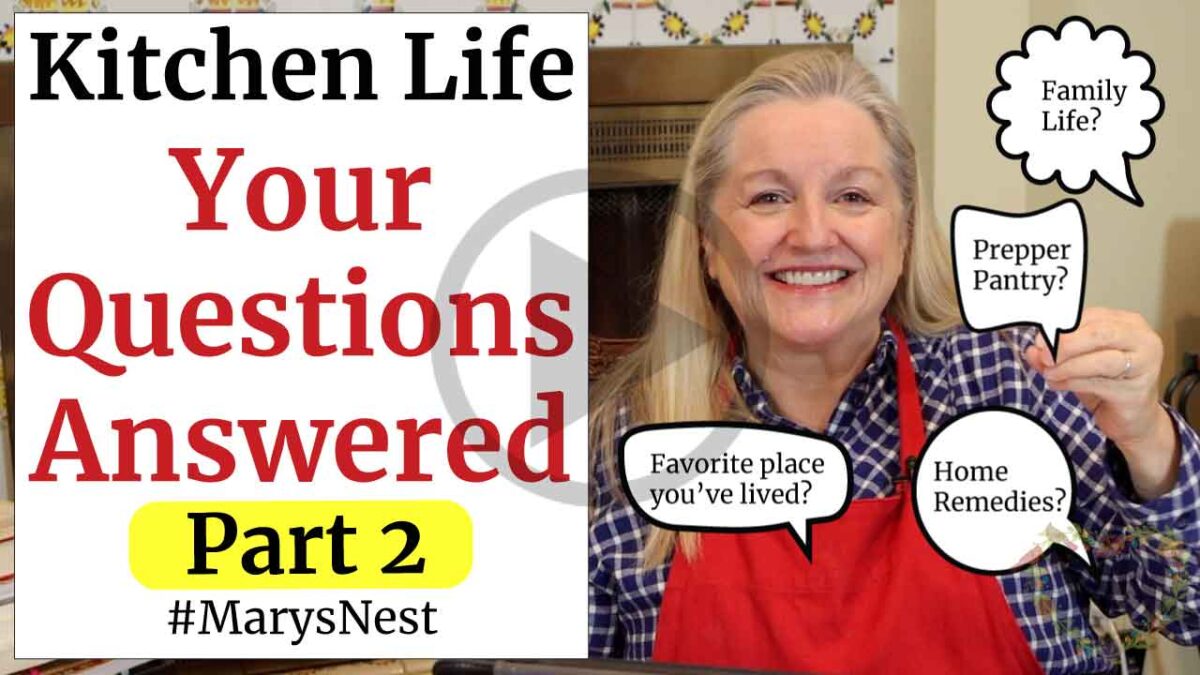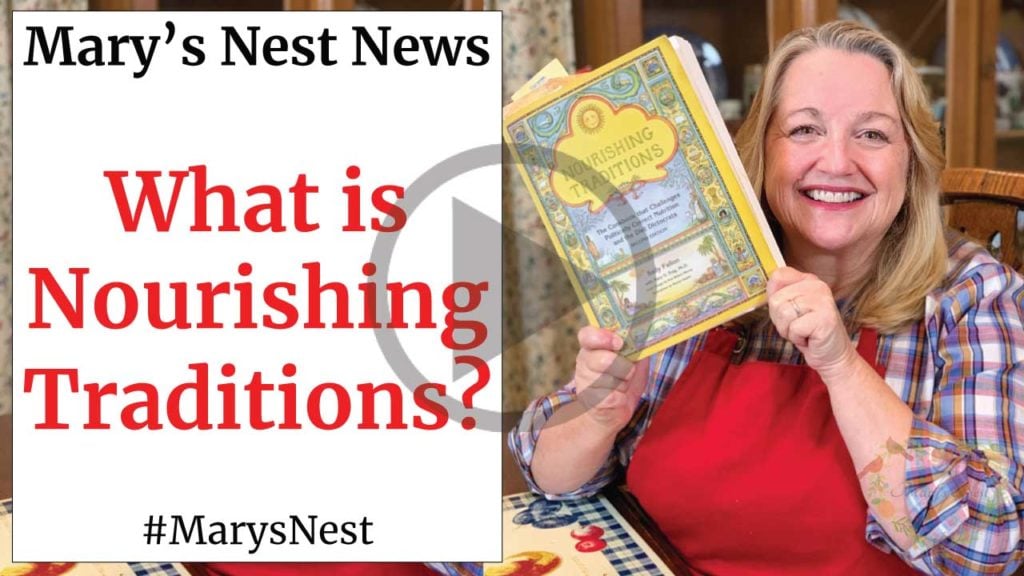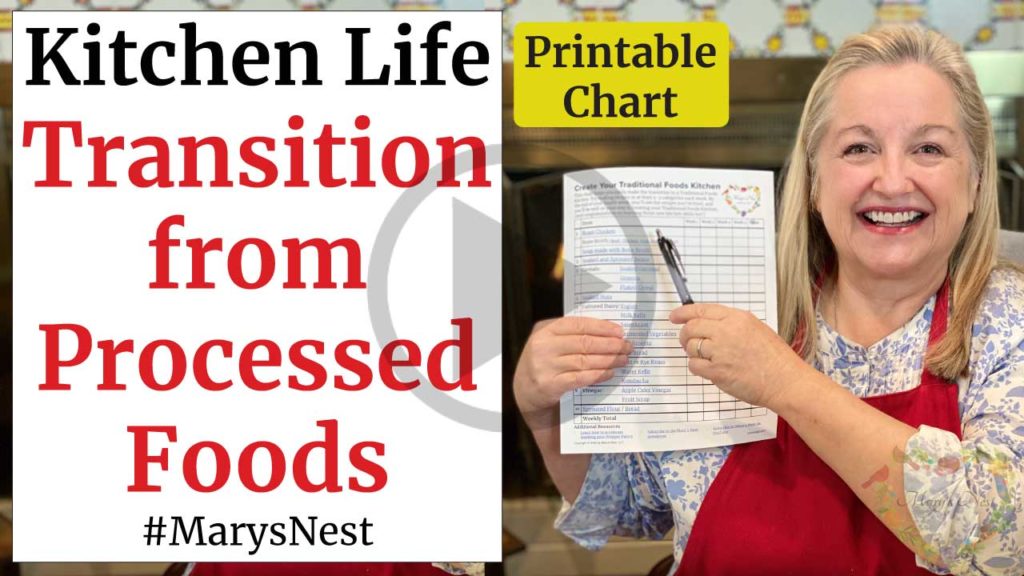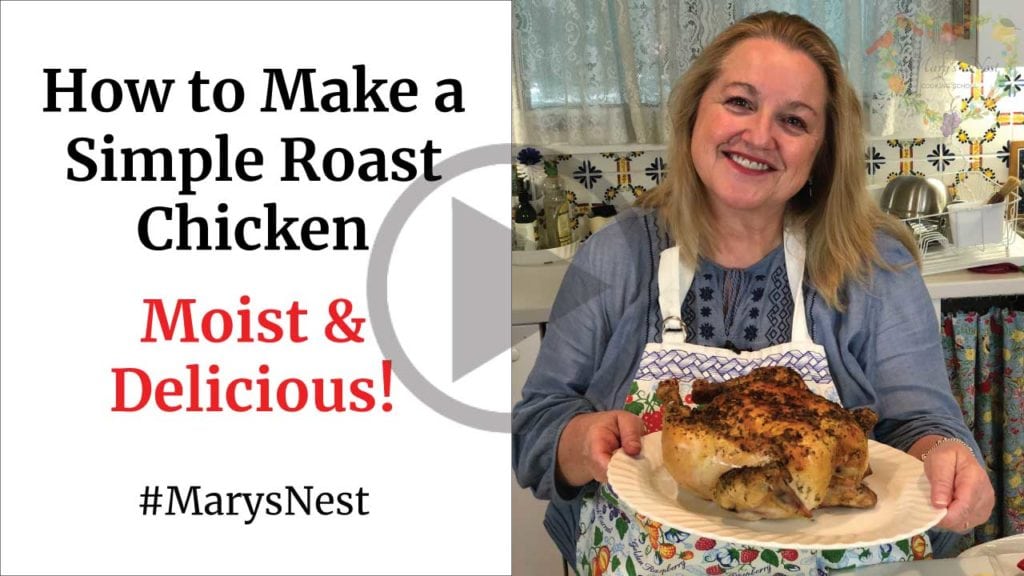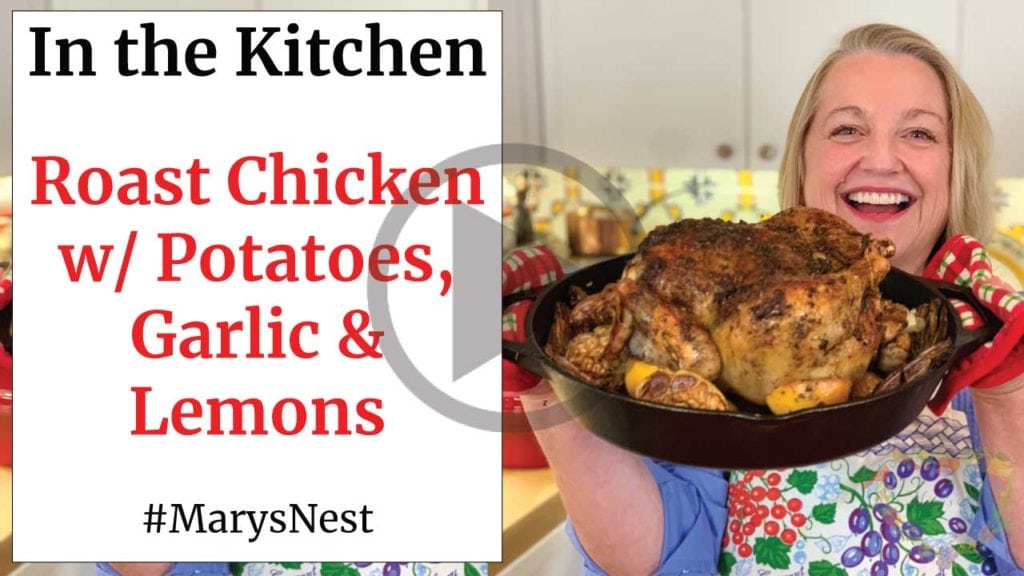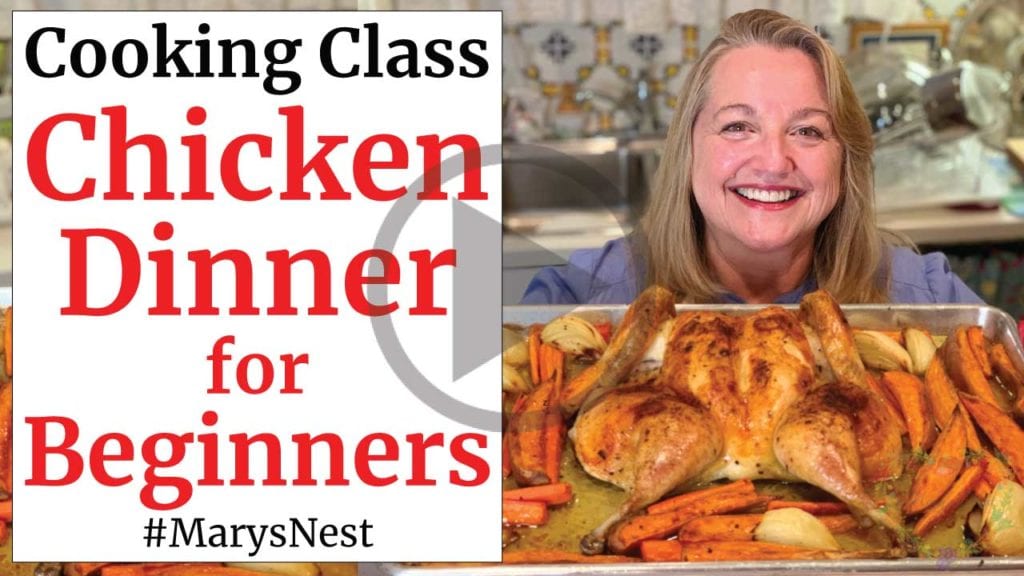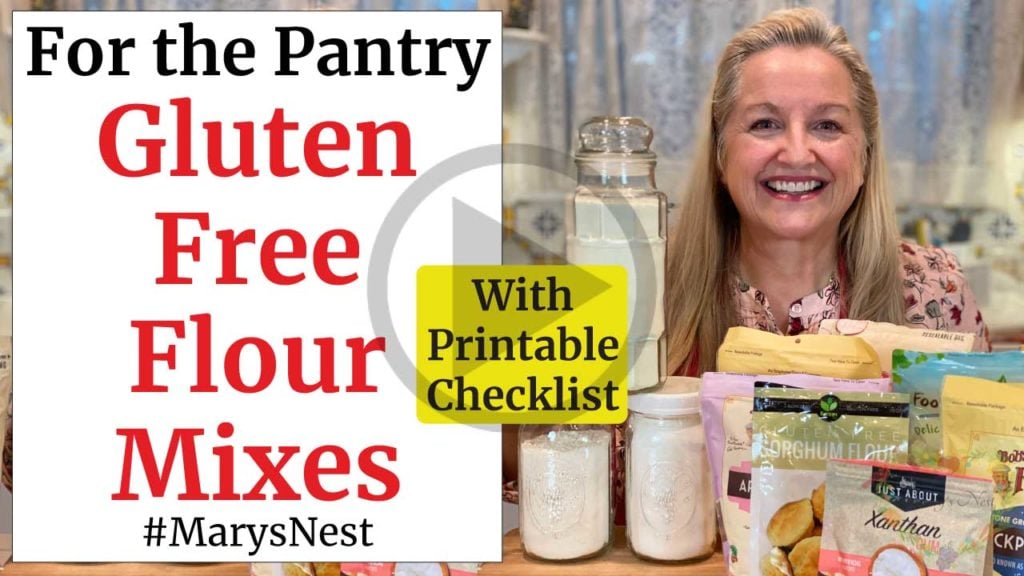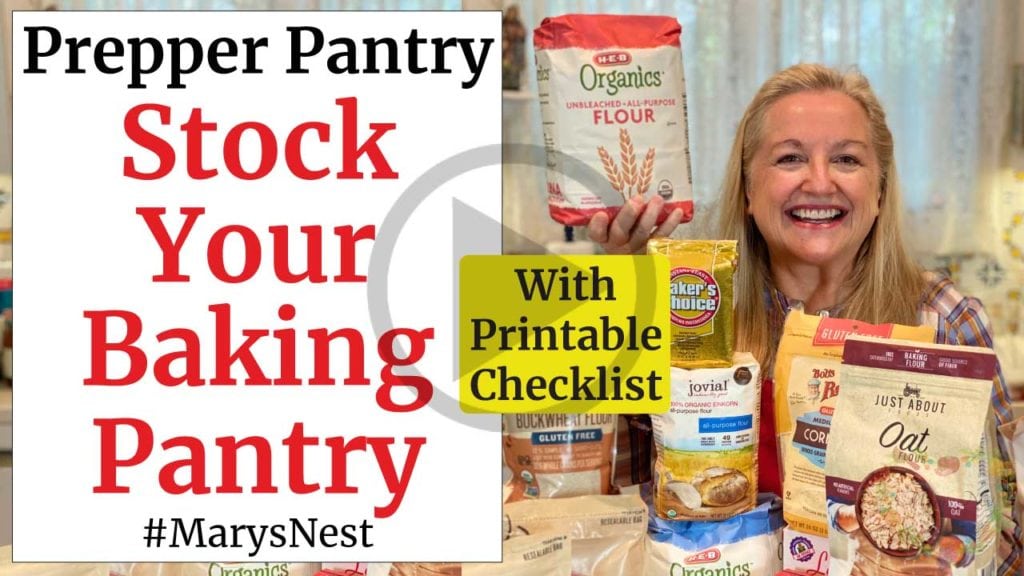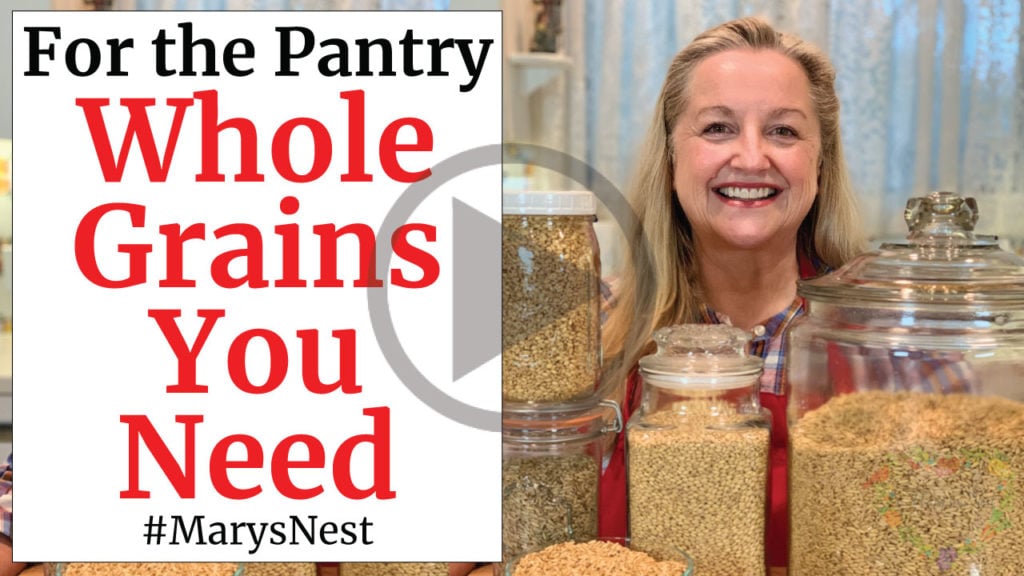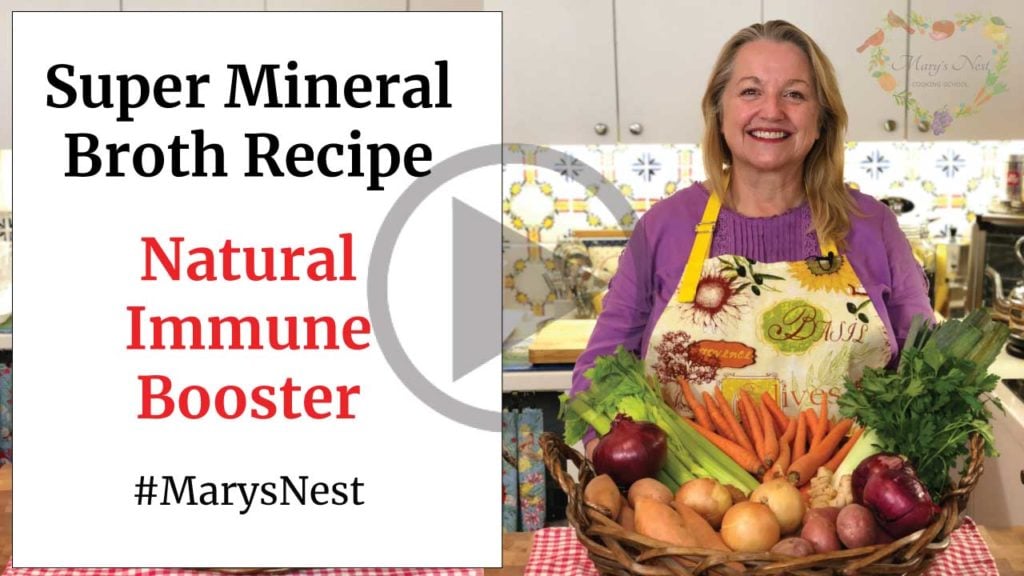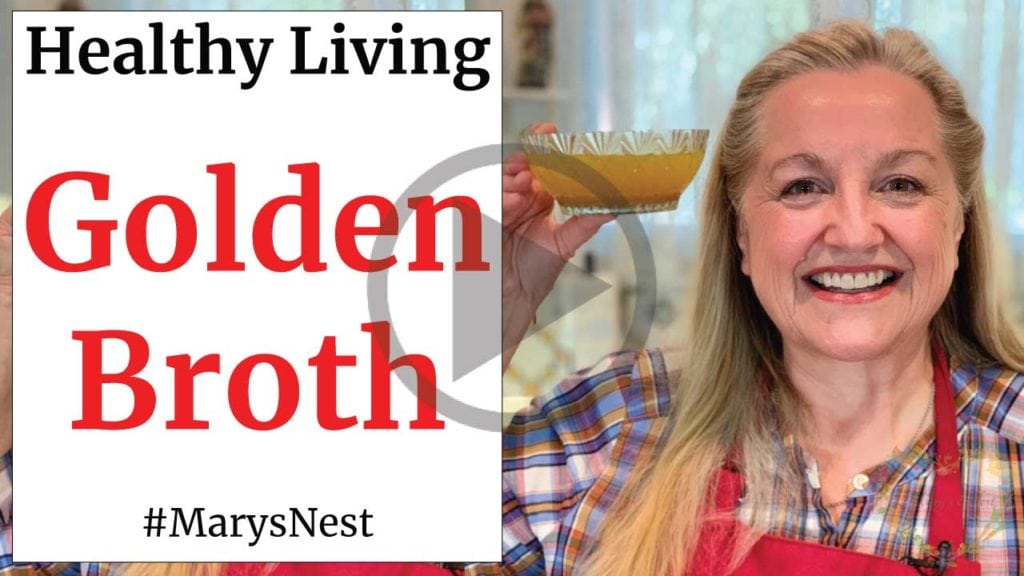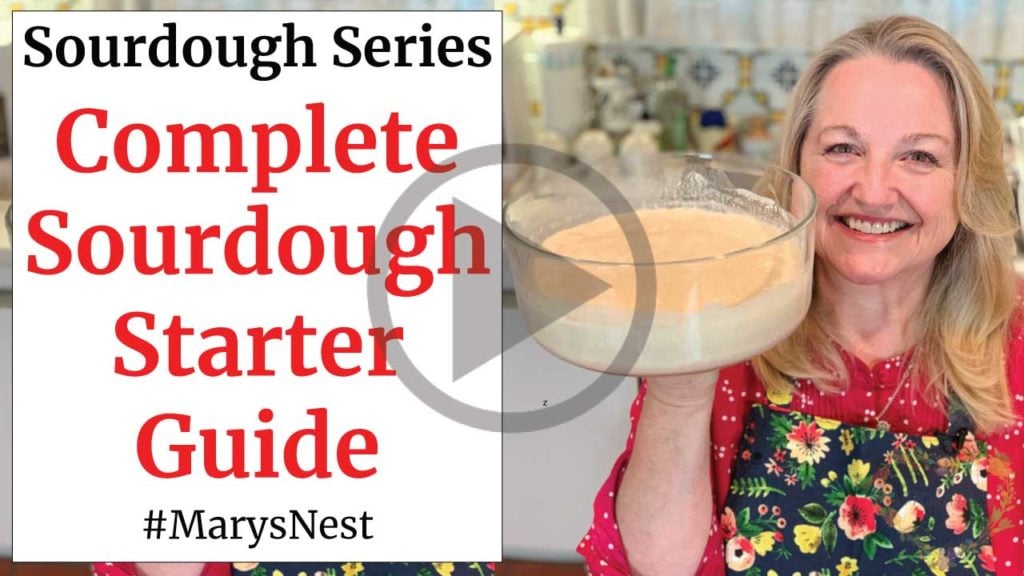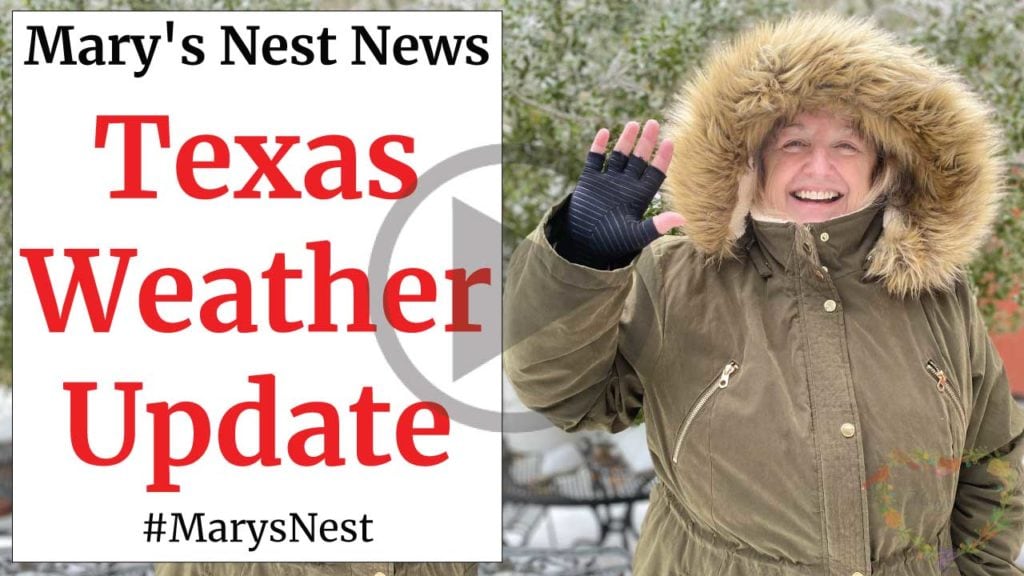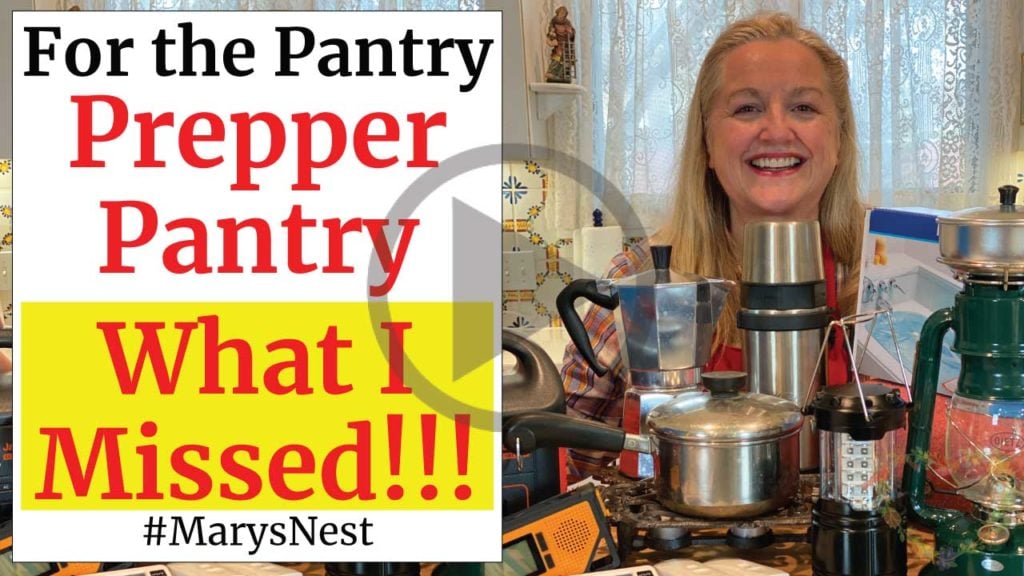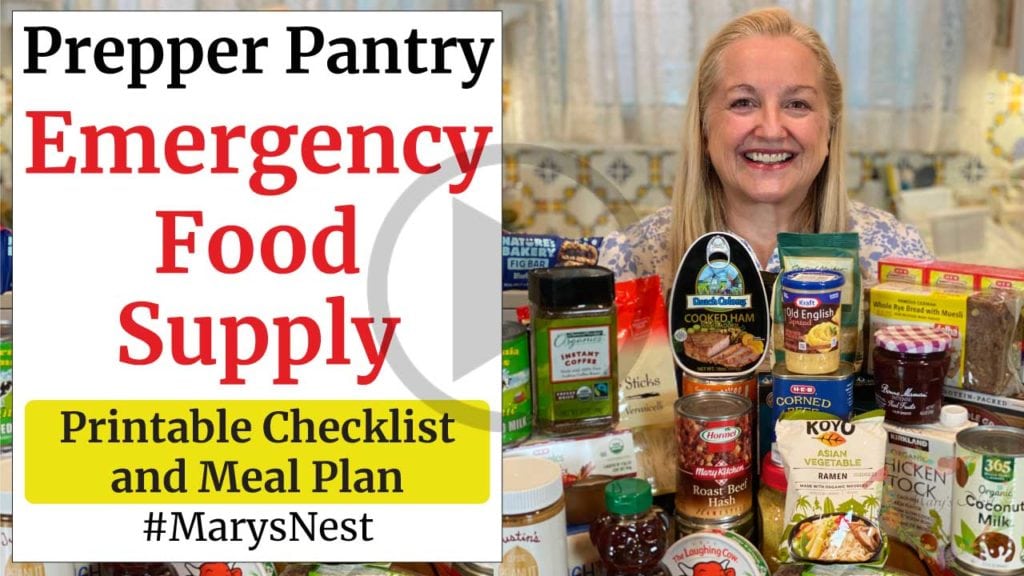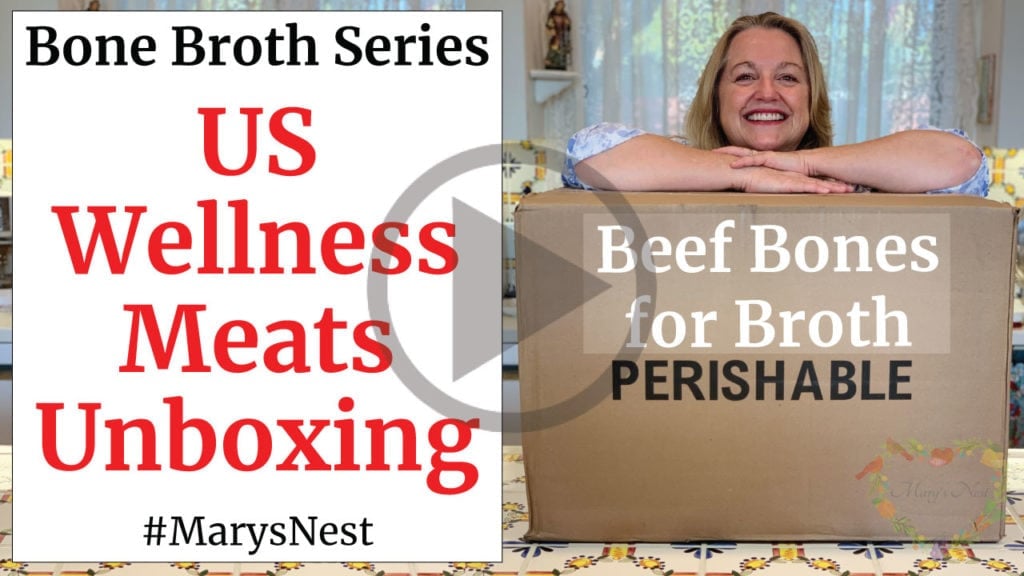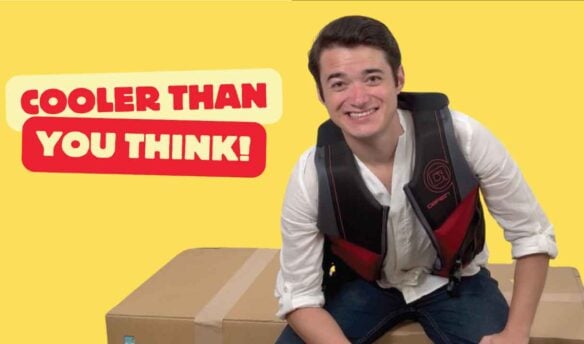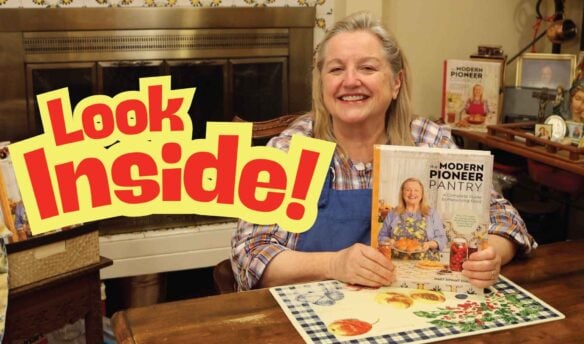On my YouTube community page, I recently asked my viewers if they had questions on traditional foods or any other subjects they would like me to answer or talk about. Wow! I was so happy to see all the questions, ranging from bone broth to my family life. I also had questions on how to get started with traditional foods and a question many parents have: How do you deal with picky eaters?
In today’s video, I started answering these questions, but what started out as a simple question-and-answer session turned into a long-form video that goes in-depth on the many topics. So I split the video into two parts, and I’m glad to share the first part with you today, where I’ll discuss questions covering bone broth, culturing dairy, fermentation, getting started, and yes, those picky eaters.
Affiliates note: As an Amazon Associate I earn from qualifying purchases. My content may contain affiliate links to products and services. If you click through and make a purchase, I’ll receive a small commission. It does not affect the price you pay.
Table of Contents
- An Overview of Viewer Questions
- How Do You Deal with Picky Eaters?
- Where to Start Your Traditional Foods Journey?
- Just Start with a Roast Chicken
- Low Carb and High Carb Eating Together
- Trouble Digesting Bread?
- How can I Prepare for Emergencies?
- More Questions and Answers
- Looking for Beef Bones for Bone Broth?
- Grind Your Own Flour with the Mockmill
- Shop for items used in this blog post or video
Affiliates note: As an Amazon Associate I earn from qualifying purchases. My content may contain affiliate links to products and services. If you click through and make a purchase, I’ll receive a small commission. It does not affect the price you pay.
An Overview of Viewer Questions
As you know, I like to gear my videos to beginners and provide a lot more detail to help explain each step in a recipe or why you need to perform an activity. There are lots of short videos on the Internet to show you a recipe in just a minute or two with a flash of hands and jump cuts. But that’s not me and what I love to provide to my viewers.
Many of my questions are from beginners, but I also have some from viewers who are further down the path towards creating a traditional foods kitchen. I’m happy to answer both types of questions.

Do You Love Listening to Podcasts?
If you like podcasts, you’ll love today’s extended video. You can play it on your mobile device and listen to it while preparing a meal in the kitchen or walking your dog and enjoying the cool autumn air. You also can open up the video description on YouTube for a list of the timestamps so you can jump to a section of interest.
In this blog post, I touch on some of the questions and answers; you can get the complete set of questions and answers in my video.
To get a notification of when I publish the second part of my question-and-answer video, be sure to subscribe to my free Mary’s Nest newsletter, subscribe to my public YouTube channel, or do both so you don’t miss a thing! My newsletter covers more than just the latest video. I also share some of my adventures in Central Texas in my weekly newsletter, with special editions from time to time.

Your Questions Answered Part 2
Update: Here’s the second part of my question and answer series that includes the many personal questions I received from you, including “How did I start my YouTube channel?” and “Can you share your beauty routine?”
In Part 2, I also cover your traditional foods questions on what to keep out of your traditional foods kitchen, herbal and home remedies, the Prepper Pantry, vinegar, sourdough, oats, and more.
How Do You Deal with Picky Eaters?
If you’re a parent, you’ve undoubtedly had the challenge of trying to feed picky eaters, if not your children, then their friends when they come over on play dates. This can be a particular problem when you’re trying to feed children nutrient-dense traditional foods.
I have three recommendations for dealing with picky eaters:
- Don’t make the food an issue.
- Make the food tasty.
- Make eating homemade foods fancy.
I go into detail about each recommendation in this blog post and today’s video.
Don’t Make the Food an Issue
First, I want to share my mom’s experience when dealing with some of my friends who were picky eaters. (I grew up eating all kinds of traditional from-scratch foods, so I don’t recall a food I didn’t like, except maybe okra.)
My mom loved to serve food, as it was her way to give love to us and our friends, and she made a lot of food from scratch. Other kids were used to wonder bread, so when they came over to our house, and my mom served them banana bread or fresh bread with homemade jam, they would say that they only ate the name-brand breads or jellies.

My mom would nod her head with understanding, but she would keep serving her homemade food. When the kids didn’t get a reaction from my mom, some would start picking at their food, and when they found it was delicious, they would eat it all up.
Others would push their food aside and go back to playing. As they became hungrier, they would return to the table and ask if their jelly bread was still there. My mom would say yes and guide them to their plate. They would start eating it, and as with my other friends, they would enjoy it all. Homemade food wasn’t so bad. In fact, it was pretty good!
So that’s my first advice, which I attribute to my mom. Don’t make a big issue about the food if kids are resistant to it at first. Make it a non-issue. Just smile, keep making homemade food, and serve it even if they are not immediately smiling back. They’ll eventually come around to trying out the food and discover it’s quite good.
Make the Food Tasty
My second piece of advice would be to make the food tasty. Note that you don’t want to make it spicy since kids’ taste buds may be more sensitive to spice. However, you want to make the food more flavorful, which will be more attractive for younger kids.
For example, let’s talk about beef liver. Do you know any kids who are eager to eat beef liver? (I don’t see any hands.) However, you can make this nutrient-dense food more flavorful by frying it, which I show you in my How to Cook Beef Liver recipe video. Add some fermented ketchup, and kids will be asking for this recipe again and again!
- How to Cook Beef Liver (Your Kids Will Love)
This is true for adult palettes too. We are drawn to more flavorful food than blander fare. So just think of the flavors you enjoy and be sure the meals to your kids have the same taste. (I know of many husbands who would like fried beef liver too!)
Make Eating Homemade Foods Fancy
Just like us, kids eat with all their senses. So making homemade foods look good on the plate also invites them to enjoy it.
When my son was younger, I served him traditional foods in bento boxes, which made them cute and special in the different compartments. That’s a fun way to see and eat food. I also gave him some long and thin plastic utensils that my mom had for eating appetizers. In the hands of children, these utensils were something special, especially when I told my son that they were for eating hors d’oeuvres. Wow!

So the fancier you can serve traditional foods, the more success you’ll have encouraging your children and picky eaters to eat nutrient-dense recipes. Once they get used to eating nutritious food, it’ll be a habit they will keep through adulthood, and the openness to eating healthy foods is something you can be proud of passing on to them.
Where to Start Your Traditional Foods Journey?
How do I get started with traditional foods? As you can imagine, I get this question a lot from beginners, and it’s easy to see why. There’s so much content about traditional foods on the Internet that it can be hard to find a place to get started and not feel overwhelmed.
I talk about the journey from a processed foods kitchen to a traditional foods kitchen in today’s video. If you’re looking for a book to start with, I recommend that you get Sally Fallon’s Nourishing Tradition book as a textbook or reference book on traditional foods.
For an online cooking course, I encourage you to watch my 15-video tutorial series that will give you step-by-step visual instructions on how to create the different types of traditional foods, from bone broth to sourdough and more. Then, try all the recipes to find out which ones you like.
Alternatively, if you want to focus on a particular type of traditional food, such as ferments, watch the homemade sauerkraut video that’s part of the series. That recipe video has over 2.2 million views, so you know it has helped millions of people get started with fermentation as part of their traditional foods kitchen.
If you’re unsure where to start on your traditional foods journey or feel overwhelmed with all the different homemade recipes, watch my 10 Easy Ways to Transition from Processed Foods to Traditional Foods video. And be sure to download and print out my free chart to help you in your kitchen.
Just Start with a Roast Chicken
If you want one specific recipe to start with, I would say just start with a roast chicken. It’s such a comforting meal that will give you and your family lots of protein as well as food for leftovers, such as for soup or another traditional foods recipe, like chicken bone broth.
If you’re used to cooking pre-prepared food, handling a raw chicken may concern you. Before we married, my husband didn’t want anything to do with a raw chicken. He would only prepare recipes with fish fillets or hamburger meat that he could cook thoroughly.
If you feel more comfortable, use gloves the first time you handle your whole raw chicken. However, it’s okay to use your bare hands, but be sure to wash them before and after handling your raw chicken.
- Note: The U.S. Department of Agriculture recommends not to wash your raw chicken as that will splash bacteria around your sink and kitchen area. Don’t worry. Any bad bacteria on your chicken will get cooked out when it’s roasted in your oven.
Cooking your first roast chicken will give you an incredible moral boost and provide you with confidence in your kitchen abilities. Your next roast chicken will be even easier as you learn what works best with your oven. Here are a few roast chicken recipes you can choose from to get started. You can do this!
Low Carb and High Carb Eating Together
Now, here’s a dilemma. How can you bring low- and high-carb eaters to the same dinner table without making two completely different meals? This scenario is not the same as picky eaters. Your adult dinner table companions may have dietary reasons for cutting back on the carbohydrates they consume.
First, think about the foods they like and what you can prepare that overlaps with their dietary needs or what they prefer to eat. In many cases, you can prepare one meal, and each guest can take more of one of the dishes over the other.
For example, just start with a roast chicken. (Where have I heard that before?) Or even try making a praised chicken for a change of pace and a nice broth.
And also, prepare sides to serve with the chicken, such as potatoes, green beans, and rice. Those on the lower-carb diet can take more of the chicken and just eat a smaller portion of the grains. Those who enjoy a higher-carb diet can eat more of the sides along with the chicken. This way, you can cook one meal, and everyone can enjoy or eat what they want.
What about Gluten Free?
In today’s video, I also talk about gluten-free, and the following videos give you some ideas on foods you can make and bake that are gluten-free and that everyone can enjoy. And be sure to download the free printable checklist that accompanies my How to Make Gluten-Free Flour Mixes video.
What About Vegetarians and Vegans?
I’m not as familiar with the different vegan diets since I understand that you may not be able to eat honey with some of the regimes, etc. However, I have a few recipes that I recommend for diets that lean toward more vegetarian. You’ll find super mineral broth and golden broth to be tasty and flavorful. Even non-vegetarians will enjoy these broths!
Trouble Digesting Bread?
If you’re having problems digesting bread, you can try some of the gluten-free baking recipes I listed earlier. However, if you’re okay with gluten in your food but still find it difficult to digest bread, I encourage you to try sourdough—real sourdough bread.
Sourdough bread goes through a souring process before being baked, and this process breaks down substances in wheat, making it easier to digest.
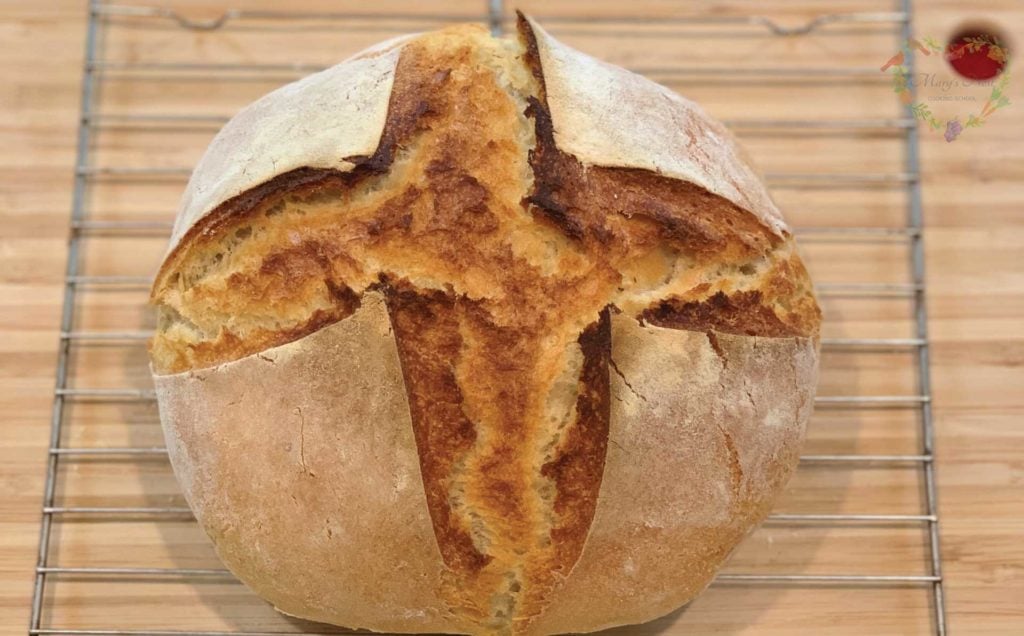
Note that some of the breads in the grocery store may say they are sourdough, but they may just have a sourdough flavoring. Take a look at the ingredients on the plastic-wrapped bread. Unless they are using a sourdough starter, you may just be eating all-purpose flour white bread that has some sourdough flavoring and yeast mixed in.
For true sourdough, trust yourself and your traditional foods kitchen. You don’t have to be in San Francisco to make sourdough bread. You can create a sourdough starter anywhere, though some environments are easier to start than others. I show you how to create a homemade sourdough starter in my complete sourdough starter guide video.
And you can put your sourdough starter to good use with my no-knead sourdough bread recipe. This is an excellent sourdough bread to start with since it has a shorter fermentation than traditional sourdough bread. The shorter fermentation time creates a milder flavor, which is especially welcome to pallets new to sourdough bread. It’ll bring a smile to many picky eaters!
No knead breads are a lot easier to make, especially if you’ve been working in the kitchen making other recipes during the day. With this recipe, fresh sourdough bread is just a few hours away.
How can I Prepare for Emergencies?
Do you remember reading about the terrible ice storm that froze most of Texas to a standstill with subfreezing temperatures for about a week during the winter of 2021? You may have lived through it or something similar where you’re located.
The experience of living through below-freezing temperatures without electricity taught me a lot and revealed holes in my Prepper Pantry. (Plus, we don’t have natural gas, so there was no way to heat our home or cook any food without a fire in our fireplace or a candle flame.)
If you’re worried about emergencies, such as severe weather that can make it impossible for you to travel from your home, preparation is the best remedy to give you confidence about future concerns.
In the following videos, I share what I learned from our winter storm, and I show you how to create an emergency food supply, including a bug-out bag with emergency food in the event you need to leave your home. The emergency food supply blog post also includes a free shopping list and meal plan you can download, print out, and store with your emergency food.
- How to Build a 2-Week Emergency Food Supply (Includes Printable Checklist and Meal Plan)
More Questions and Answers
Watch today’s video for more answers to your questions on traditional foods. I talk about whether you can add sugar to a finished fermented food, if the low setting on your slow cooker is warm enough to make bone broth, and more.
And be sure to stay tuned for more in part 2 of my questions-and-answers video!
Looking for Beef Bones for Bone Broth?
If all these questions on bone broth have you wanting to make beef bone broth, you can usually find beef bones in your local supermarket or farmer’s market. However, if you can’t find high-quality beef bones in your neighborhood supermarket or farmer’s market, check out US Wellness Meats for their wide selection of bones and more.
- Use discount code MARYNEST and my link to save a one time 15% off regular-priced items on your US Wellness Meats order. You can shop for a variety of products, including:
- Beef Bones
- Grass-Fed Beef
- Free-Range Whole Chickens
- Bone-in Pork Chops
- Chicken Feet (helps your bone broth be even more gelatinous)
This post is not sponsored. I’m a long-time customer of US Wellness Meats because I have always been impressed by the quality of their products. Check out my US Wellness Meats unboxing video to see the types of products you can get, including bones for beef bone broth!
Grind Your Own Flour with the Mockmill
If you’re a new traditional foods cook, you’ll want to create an extended or Prepper Pantry to help store your supplies for the long term. And you’ll want to keep whole grains in your Prepper Pantry since they have a long shelf life. However, you’ll need a manual or electric grain mill to turn the grains into flour.
When it comes to electric grain mills, I decided to buy a Mockmill after I did a lot of research. And am I so happy I did! The Mockmill is a very affordable but beautifully crafted German-made mill that stone grinds grain with settings ranging from 1 to 10—fine to coarse ground grain.
And I have great news! The folks at Mockmill are very kind to offer my viewers and readers a special one-time discount on any of the grain mills that they sell.
- Use my affiliate link for a special one-time 5% discount on Mockmill Stone Grain Mill products. (The discount will appear when you checkout.)
Note: You can also get the new Flake Lover’s Flaker from Mockmill. Using this device, you can flake whole grain in minutes.
You can see me unbox and try out the Mockmill 100 Grain mill in the following video. (This is not a sponsored post, I bought the Mockmill products that I show you, and I’m a happy user of their devices in my kitchen.)
Stay in Touch with Mary’s Nest
- Subscribe to My YouTube Channel for Traditional Foods Videos (Free) - When you subscribe, be sure to click on the notification bell that will let you know each time I upload a new video.
- Subscribe to Mary’s Traditional Foods Newsletter (Free) - Get a free 36-page eBook for signing up: How to Stock Your Essential Traditional Foods Four-Corners Pantry.
- Join the Traditional Foods Kitchen Academy - For more detailed videos and exclusive members-only perks, join my YouTube membership community.
- Order The Modern Pioneer Cookbook - Get a hardcover book of Mary's nourishing recipes from a Traditional Foods Kitchen. This bestselling cookbook is published by Penguin Random House with their DK imprint.
- Preorder The Modern Pioneer Pantry - Be one of the first to get Mary's hardcover book about preserving food and making delicious meals from your Four Corners Pantry. Mary's second cookbook is also published by Penguin Random House.
I look forward to having you join me in my Texas Hill Country Kitchen!
Shop for items used in this blog post or video
Favorite Kitchen Supplies
- Favorite Aprons
- Spice Grinder
- Countertop Burner (On my kitchen island in many recipe videos.)
- Handheld Vacuum Sealing System
- Vacuum Lids
- Whisk
- Silica Gel Packets (Helps keep moisture from building up in your mix)
- Cast Iron Dutch Oven
- 8-Quart Slow-Cooker
- Fat Separator (Clever kitchen device to help you decant bone broth)
- Flour Sack Towels
- pH Strips (Helps you check on the acidity of your vinegar)
More Kitchen Supplies with Discount Codes
Amazon Shop and Shopping Guide
- Visit Mary’s Nest Amazon Shop
- Visit my Shopping Guide page
Get up to 15% off for stocking your Traditional Foods Pantry and equipping your Modern Pioneer Kitchen, including discounts from US Wellness Meats, Farmhouse Teas, Lehman's, Masontops, Cultures for Health, Survival Garden Seeds, Redmond Real Salt, Plan to Eat, and More!
